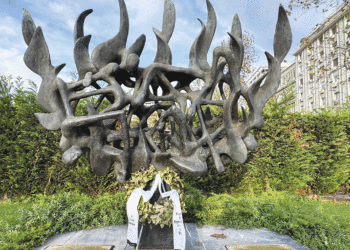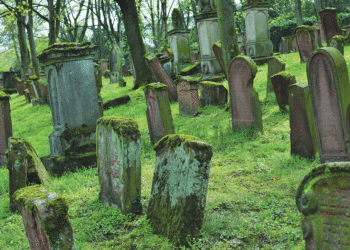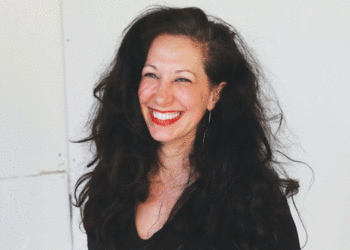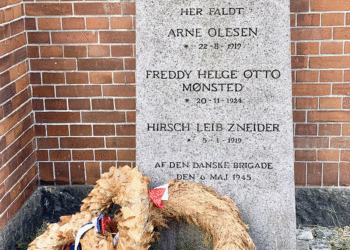By CARLA WALDEMAR
Poland was high on my bucket list. So it was time to check it out, thanks to amazingly affordable prices, welcoming locals, and a lively, can-do spirit fueling cities on the rise — add in the many moving sites of Jewish heritage and we were on our way.
We began our trip in Warsaw, the capital, where Old Town presents charming façades of a bygone era, but they’re false. Thanks to local spirit, Old Town has been rebuilt exactly as it stood before — well, before the worst of times.
Jewish Travel
The entire city was savagely flattened by the Nazis in reprisal for the courageous but doomed Warsaw Uprising of 1944 (separate from the Warsaw Ghetto Uprising of 1943). Today the heroic event is relived in the Warsaw Uprising Museum, with its reenactment of that amazing 63-day struggle, by Jews and gentiles alike, and life under the Nazi regime.
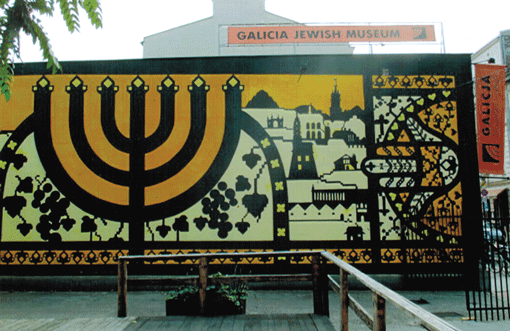
Jewish buildings were methodically destroyed and lives cruelly ended, but neither has been forgotten. Memorials arise where once brave events occurred, and our mission as visitors was to pay homage. We joined a free walking tour of Jewish Warsaw, which was once second only to New York in Jewish residents — 400,000 before the mass murders; 3,500 today.
Our guide, Agata, led us to the Heroes of the Ghetto sculpture, rising from the site of the Great Synagogue of 1879, which was blown up by the Nazis. One side portrays the men, women and, yes, even children who rose to fight the Nazis in the brief, doomed Ghetto Uprising of 1943.
(The one remaining synagogue, Nozyk, never damaged but used as a stable during Nazi rule, welcomes visitors today; surrounding it, placards detail the story of the present Jewish community.)
Our walk continued to Umschlagplatz, a.k.a. Transport Square (next stop: Treblinka), passing a sculpted memorial sewer, representing the escape route of a lucky few. We paused at the site of the famous — or infamous — bridge connecting the “small” and “large” ghettos, where today a multimedia art installation tells the story in “a Footbridge of Memory.”
We also paid silent homage to the former bunker on Mila Street where 100 members of the Jewish Combat Organization committed suicide when discovered by Nazi troops in 1943.
We ended our walk at the engaging new Polin Museum of the History of Polish Jews. The museum opened in 2014, and interactively recounts 1,000 years of Polish Jewish history, from medieval times when the country welcomed these newcomers, at first, to current times. It’s huge — plan half a day here — and it’s mesmerizing, particularly its showpiece, an entrancing painted wooden ceiling and bima of a 15th-century synagogue.
Nearby stands a tribute statue to a spunky kid who was part of the Jewish Resistance. You might know him by his adopted name, Roman Polanski, who recreated these times in his film The Piano. And remember the 2007 book The Zookeeper’s Wife? You can also visit the villa where some 300 Jews were hidden.
We continued our journey in Krakow, a three-hour train ride away. This time it’s the real deal, not reconstructed; for the Nazis conquered the city six days after the start of the war and kept it — including the entire ghetto — intact to serve as a quaint memorial to a demolished people.
Krakow’s Jewish walking tour (again, free), which is offered daily, is one of the most popular and moving investigations of life before and during the war. Several synagogues remain (and are open to visitors), as does the medieval cemetery crowded with tombstones and scores of edifices that housed schools, hospitals and social centers.
In their midst, the new Galicia (region) Jewish Museum commemorates in moving photographs the Jewish synagogues, cemeteries and other sites throughout the province destroyed by the Nazis, and the humiliations, and worse, that these people endured. Here, in the heart of the former Jewish Quarter, a lineup of restaurants circling the area’s central greensward tempts visitors with classic Jewish dishes.
Close to the major camp-transport site stands the Eagle Pharmacy, run by a Catholic pharmacist who saved many Jewish lives through his underground activity (firsthand accounts and photos from ghetto residents flesh out the chilling story of those days) — supplying everything from fake documents and medicines to hair dye to forestall death transports for the elderly. Just outside, on the transport platform, rows of empty chairs serve as a grim memorial.
And, across the river, there it is: the now-famous factory of Oskar Schindler, another savior, which is open to tour.
***
Carla Waldemar is a travel writer based in Minneapolis.
(American Jewish World, 11.20.15)










